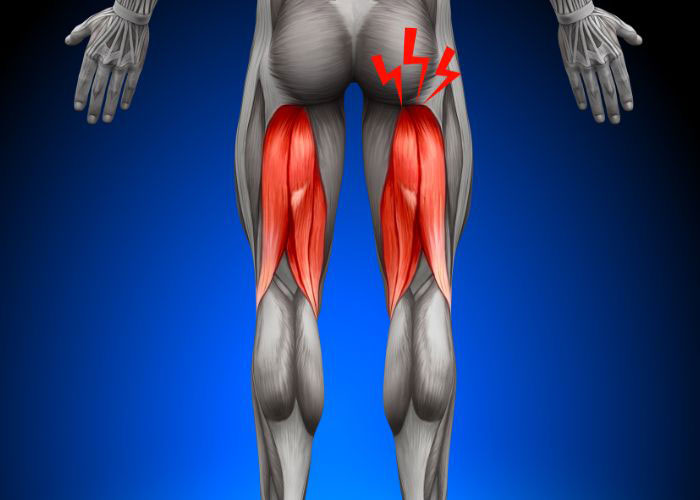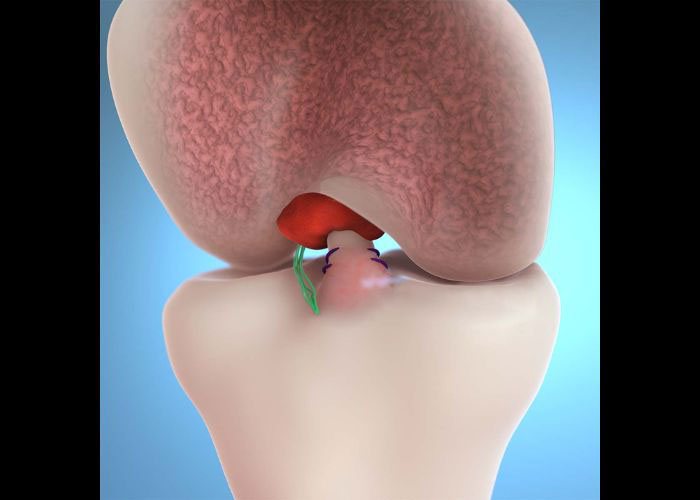What is hip dysplasia?
The hip joint is created from the insertion of the head of the femur (thigh bone) into the socket portion of the acetabulum (pelvis). The position of the femoral head in this socket is crucial to the proper function of the hip joint. Hip dysplasia is the condition where the acetabular socket is not deep enough to secure and fully cover the ball of the femur. A shallow socket can result in hip instability, joint pain, labral tear, recurrent hip dislocations, and eventually lead to osteoarthritis of the hip. Dr. Ronak Mukesh Patel, orthopedic hip specialist serving patients in Sugar Land, Pearland, and the Houston, Texas area, has the knowledge and understanding as well as substantial experience in treating patients who have experienced hip dysplasia.

Are there different forms of hip dysplasia?
The following terms classify hip dysplasia based on when this condition is diagnosed and the severity of symptoms.
- Congenital Dislocation of the Hip (CDH): This form originates during fetal development when the hip joint is not formed correctly.
- Developmental Dysplasia of the Hip (DDH): Babies and children with this condition have an anatomically normal hip joint but experience joint instability.
- Acetabular Dysplasia: Adolescents and adults can develop this form when the acetabulum socket fails to support the femoral head because it is too shallow.
How is hip dysplasia categorized?
The position of the femoral head in the acetabulum socket is described through the following terms:
- Dislocatable: The head of the femur is easily separated from the hip socket.
- The femoral head is entirely out of the acetabulum socket.
- Subluxable: The ball of the femur is in the correct anatomical position; however, changing positions or pushing on the hip can move the femoral head partway out of the socket.
- Subluxed: The femoral head is partially out of the hip socket. This is also referred to as a partial dislocation.
- Acetabular Dysplasia: Although the head of the femur is in the hip socket, the socket portion of the acetabulum is too shallow to sufficiently house the ball of the femur resulting in joint instability.
Are there certain risk factors for developing hip dysplasia?
The following are some risk factors that can increase an adolescent’s likelihood of developing hip dysplasia:
- Gender: The incidence of hip dysplasia in females is 4 to 5 times greater than males.
- Genetics: Developmental Dysplasia of the Hip (DDH) is an inherited familial trait.
- Fetal Presentation: Babies that are born in the feet-first breech position have a higher risk of developing hip dysplasia.
- Multiple Gestations: Pregnancies with multiple offspring (i.e. twins, triplets, etc.) can increase the risk of hip dysplasia. In a twin pregnancy, if baby A is born with DDH then baby B has a 40% higher risk of also developing DDH.
- Birth Order: First-born children more commonly experience hip dysplasia compared to later siblings.
What are the symptoms of hip dysplasia?
The most common complaint of hip dysplasia is pain along the side of the hip and/or in the groin area. Some other common symptoms reported with hip dysplasia can include:
- Abnormal gait or limp
- A feeling of the hip “giving way”
- Difficulty participating in strenuous activities
- A “catching” or “popping” sensation with joint movement
How is hip dysplasia diagnosed?
For infants, a physician gently moves their legs in certain positions to evaluate for hip dysplasia. If this condition should develop later in life, Dr. Patel will gather a complete medical history and perform a thorough physical examination. X-rays are often necessary to confirm a hip dysplasia diagnosis by analyzing the bone structure and joint arrangement. Magnetic resonance imaging (MRI) is also useful for evaluating the hip labrum and other surrounding soft-tissue structures. A computed tomography (CT) scan with 3D reconstruction may be necessary to evaluate the bony structure of the hips.
What is the treatment for hip dysplasia?
Non-surgical treatment:
Patients diagnosed with mild hip dysplasia or only experience minimal symptoms may respond well to non-surgical treatment measures. If body weight aggravates the pain, participation in a weight loss program should be considered. Limiting or modifying physical activities in addition to non-steroidal anti-inflammatory medications (NSAIDs) may control the pain and inflammation associated with this condition. If these symptoms persist with oral medications, corticosteroid injections administered directly into the hip joint can provide the sought after symptom relief. A physical rehabilitation program is also beneficial, particularly one involving lower-impact physical activities such as swimming or cycling. It is important to note that these non-surgical therapies should not be implemented for patients with moderate to severe hip dysplasia at the risk of developing osteoarthritis of the hip.
Surgical treatment:
Surgical intervention is often the preferred treatment protocol for the majority of adult and adolescent patients with hip dysplasia. Dr. Patel will take into account the patient’s age, medical history, severity of dysplasia, and recovery goals when formulating an appropriate treatment plan. One of the following surgical techniques will be recommended by Dr. Patel:
- Hip Arthroscopy: A hip arthroscopy utilizes a small camera (arthroscope) and specialized surgical instruments to remove any damaged tissue fragments and repair the hip labrum. Patients with borderline hip dysplasia or underlying hip impingement are the ideal candidates for this procedure.
- Periacetabular Osteotomy: A portion of the bone surrounding the hip socket is excised and situated for a better fit within the hip socket.
- Hip Arthroplasty: This surgical procedure is typically reserved for patients with advanced osteoarthritis. The femoral head and cartilage are reconstructed using a metal and/or plastic prosthesis to restore hip function and joint movement.
Hip Dysplasia Specialist

Have you been diagnosed with hip dysplasia? Hip dysplasia can cause catching or popping in the hip, frequent hip dislocations and an abnormal gait or limp. Severe cases of hip dysplasia can be treated by Doctor Ronak Mukesh Patel. Dr. Patel provides diagnosis as well as surgical and nonsurgical treatment options for patients in Houston, Sugar Land, and Pearland, TX who have been diagnosed with hip dysplasia. Contact Dr. Patel’s team today!








